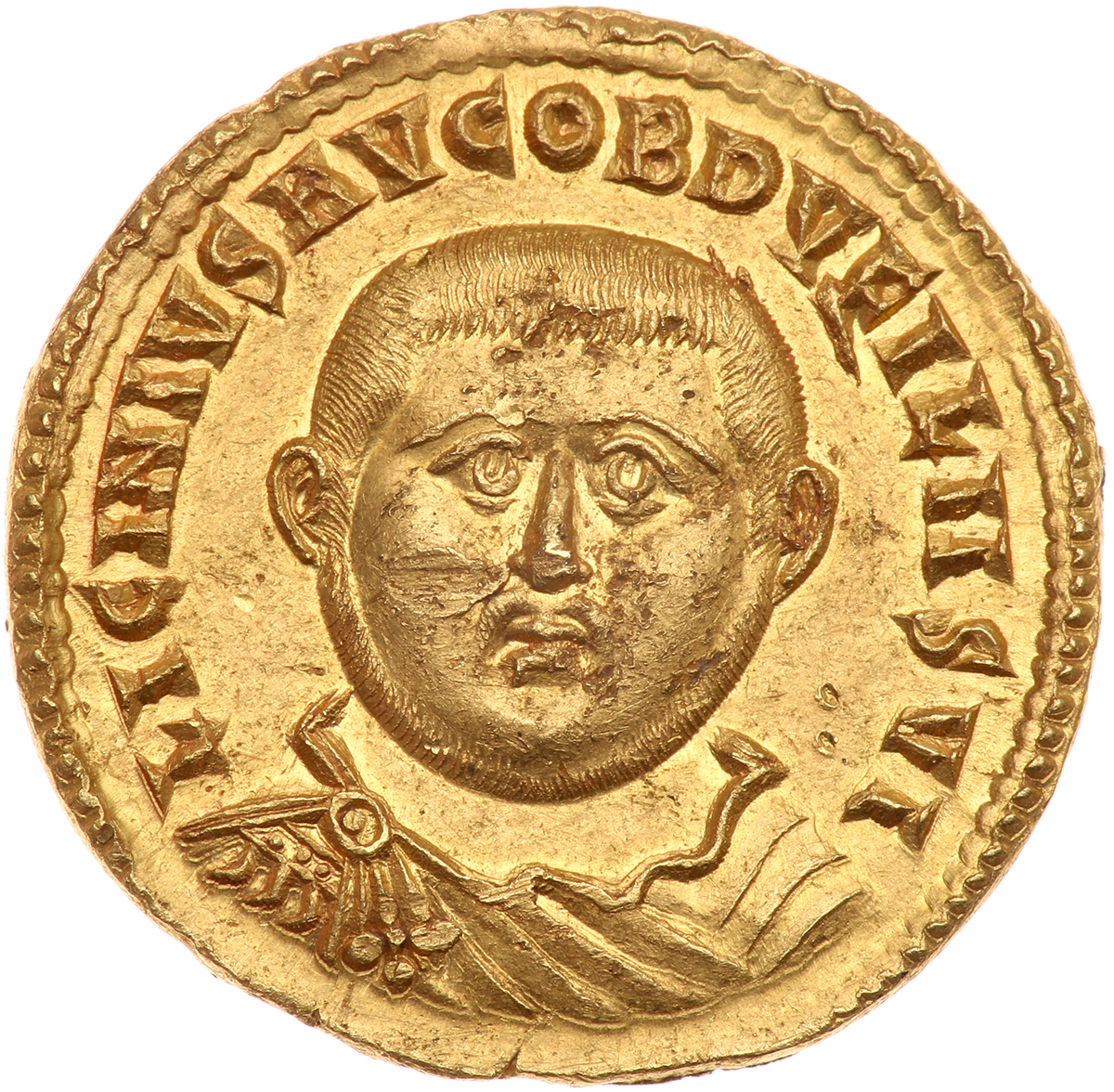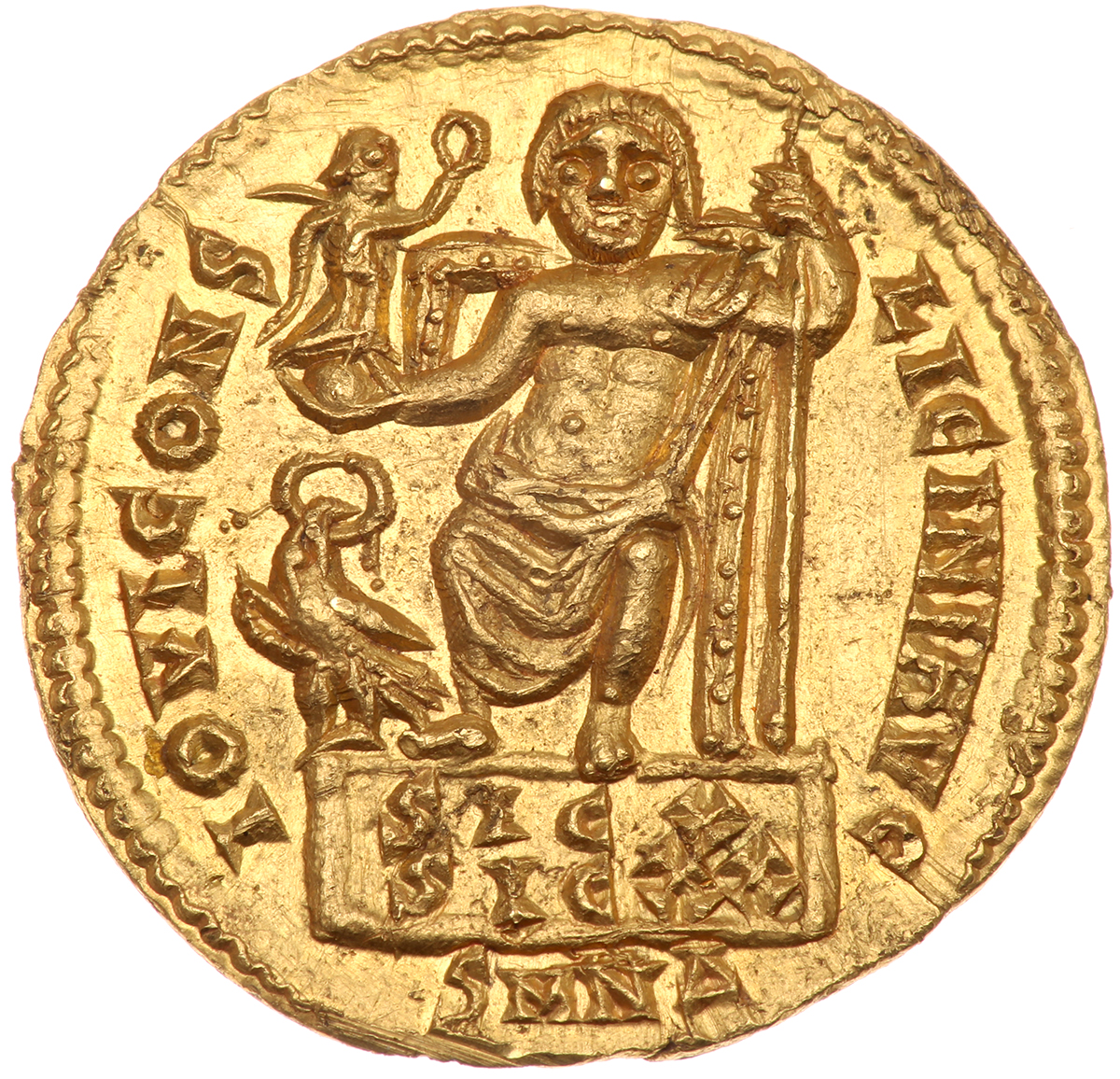By: Ira & Larry Goldberg Coins & Collectibles, Inc.
lot # 2063 - roman imperial coinage
Licinius I. Gold Aureus (5.23 g), AD 308-324 EF. Struck at Nicomedia, ca. AD 321/2. LICINIVS AVG OB D V FILII SVI, bare-headed, draped and cuirassed bust of Licinius I facing. Reverse: IOVI CONS LICINI AVG, Jupiter enthroned facing on high dais inscribed SIC X / SIC XX in two lines, holding Victory on globe and scepter; at his to left, eagle standing left, head right, holding wreath in beak; SMNΔ. RIC 41; Depeyrot 31/1; Calicó 5094. Lustrous. Marks on face and obverse fields. otherwise Extremely Fine.
Facing imperial portraits rarely occur on Roman coins until the reign of Constantius II, when that emperor employed it as his standard type for his eastern mint solidi. Until then, however, there are only few instances of its use until the early third centuy A.D., when Maxentius used his facing portrait on some gold aurei struck ca. 310-312. In 316 Constantine the Great followed in Maxentius's numismatic footsteps on an issue of very rare solidi, although the representation of the emperor there is quite different from the earlier instance. The facing gold coins of the Licinius, of which there is a companion issue struck in the name of his son, Licinius II, were made only a half decade after Constantine's use of the type, and as we might expect, appear to be inspired by one or both of these earlier issues. They were struck specifically to commemorate Licinius's taking of the imperial vows - offering his thanks for a decade of accomplishments and his aspirations for a further decade of enlightened rule - which is signified by the inscription SIC X SIC XX on the front of the dais upon which Jupiter sits on the reverse of this coin.
A further point of interest with this coin is Licinius's use of Jupiter on the reverse, which copies the great gold and ivory statue by Phidias that stood within the god's most important sanctuary at Olympia. By this time Constantine strongly favored Christianity, and the Edict of Milan which he and Licinius jointly proclaimed in 313 granted religious toleration for Christianity throughout the entire Roman Empire. Licinius was not a Christian, however, and his agreeing to the joint proclamation was probably merely to appease Constantine by giving the appearance of unity. Thus, Licinius's decision to use Jupiter to commemorate such a momentous occasion as his decennalian vows speaks volumes to the uneasy state of affairs that existed between the co-emperors at this time. Estimated Value $40,000 - 50,000
Ira & Larry Goldberg Auctioneers
Ira and Larry Goldberg are experts in the Numismatic field with over 50 years of experience. In 2010, they were each awarded a Lifetime Achievement for their contributions to the Numismatic... Read More
Send Email to Ira & Larry Goldberg Coins & Collectibles, Inc. Or Visit WebSite





